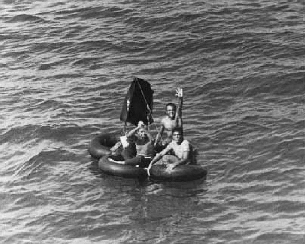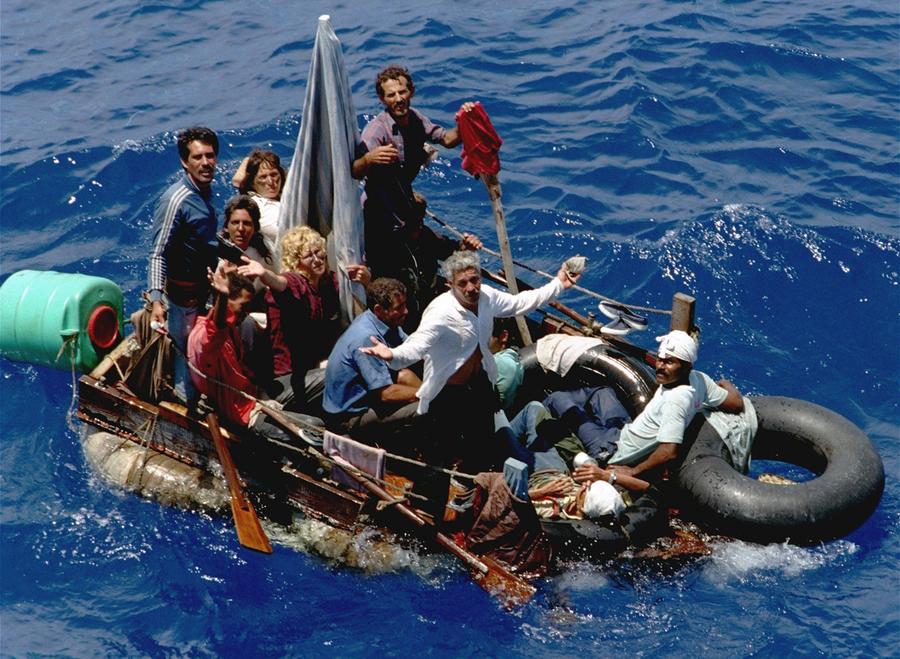History
The first wave of Cubans and Puerto Ricans that immigrated to Florida, particularly to the Tampa Bay area, was as a result of two primary drivers. Many of the immigrants were fleeing Spanish colonialism, which would last until late 1890s. The other reason was that Florida had developed a flourishing cigar industry, and so a large amount of Cuban tobacco workers migrated to find work in the States (Bergad 1). A Puerto Rican and Cuban community had already been established in Florida as a result of the economic and political connections between the Hispanic Caribbean and US that had formed because of the growing sugar imports from those islands early in the 19th century. Since Florida was one of the first principal states where the Cuban and Puerto Rican communities emerged, it formed the foundation for Cuban presence and immigration to the states (Bergad 36-37).
However, the second wave of Cubans in the 1960s migrated to Florida for different reasons than the previous generation had. The Puerto Rican immigrants came to the United States this time mainly for socioeconomic reasons, just like Dominicans in the post-1980 Dominican migration, but unlike their ancestors, the 1960s Cuban migrants were mostly political refugees (Bergad 39). These political refugees had settled in South Florida as a result of the aftermath of Fidel Castro’s revolutionary win in 1959 (Bergad 89). Since this new group of Cubans not the typical economic migrants, they were better educated and wealthier than the previous groups of immigrants from Europe and Puerto Rico. “Between 1961 and 1970 some 290,000 Cubans arrived in the United States, and in the next decade, another 265,000 crossed the Florida Straits” (Bergad 39), which established the Cubans as one of the largest Latino subgroup in Florida. By the end of the 1980s, 26% of the population in Miami was Hispanic, 70% of them were of Cuban origin, and 8% of that Latino population was Puerto Rican (Bergad 89).
Because of the established Latino community in southern states, places such as Florida and Georgia emerged as new poles of attraction for newly arrived Mexicans (Bergad 45). The Mexicans had a tendency to settle in places where there were high labor demand and where Hispanics had only been “marginally important prior to their arrival” (Bergad 68). Florida, was one out of the two states that had served as an exception to this theory. In 1980s, Mexicans had only made up 9% of the 80,000 Hispanics in Florida. However, by “2005 there were over 540,000 Mexicans in Florida, and they now represented about 16% of all Florida Latinos” (Bergad 71). Mexicans now composed the third most numerous component of Florida’s Hispanic population, and Florida had also followed as the sixth ranking state in terms of Hispanics making up the percentage of the overall population of the state (Bergad 72). Especially in Miami-Dade County, Florida, in 2005 61% of all the residents were of Hispanic origin (Bergad 79).
Los balseros was the name given to the 1994 wave of immigrants from Cuba to America - the last great wave. The Spanish word itself refers to the small boats, homemade rafts, and other marginally boat-like flotation devices in which Cubans made the perilous journey from one coast to the other, avoiding American Coast Guard patrols to make it safely to land and thus safely to asylum. As opposed to earlier decades in which the Cuban government would persecute citizens caught attempting to leave by sea - imprisonment being one of the more merciful punishments - Cuba loosened its seaward emigration restrictions and gave its “tacit (Garcia)” approval to those who wished to leave. This move, however, should not be construed as magnanimous. These dangerous journeys often fragmented families; even after the legal ban was lifted, people who wished to cross the 90 miles of open water to Florida still had to contend with the dangers and the caprice of the sea in 'boats' sometimes so flimsy as inner tubes, and so it was only the bravest, most able, or most desperate who attempted it. Furthermore, in addition to the lack of provisions for people wishing to flee, this legislative change of heart was little more than a political move aimed at showing the US the desperation the embargo on Cuba was causing its people (Garcia). There were paradoxes in US policy, too. The US Coast Guard was obligated to attempt to stop and then deport the balseros while in the water, but once they reached dry land they were automatically eligible for asylum (Garcia). 

In one five-week period, which truly captures the essence of the balsero wave, “the US Coast Guard picked up 30,305 Cubans at sea (Garcia).” The balsero wave was perceived as something of an immigrant crisis and the Clinton administration made several attempts at convincing the Castro regime to place restrictions on maritime emigration once more. Ultimately, the Castros agreed, and the US opted to pick an annual 20,000-person quota for Cuban immigrants (Garcia).
Over the years, Florida, and particularly Miami’s, Latino population had become increasingly diverse because of the arrival of immigrants from other Latino regions such as Latin America and the Caribbeans. In just 25 years, the Hispanic population had increased from 580,000 to 2 million, and the percentage of Cubans that make up the portion of Latino Miami had decreased from 56% to 42% (Bergad 89). In 2005, two-thirds of the Miami’s Latino households were made up of Cubans, Dominicans, and Puerto Ricans, while the other two Latino household heads were Colombians and Nicaraguans (Bergad 142-143).